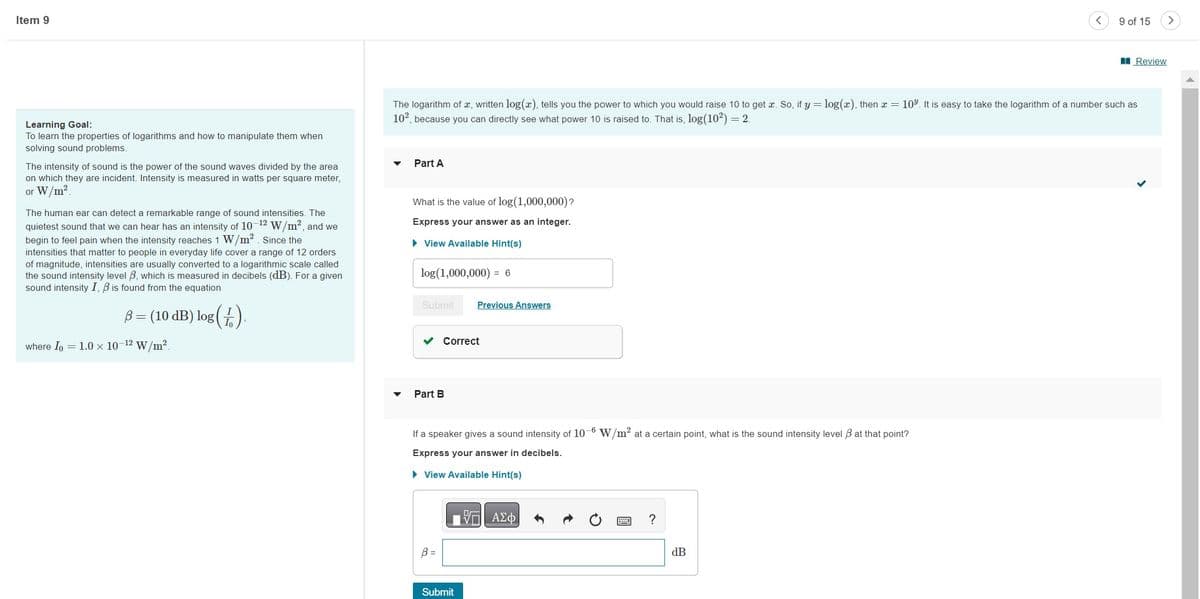Item 9 Learning Goal: To learn the properties of logarithms and how to manipulate them when solving sound problems. The intensity of sound is the power of the sound waves divided by the area on which they are incident. Intensity is measured in watts per square meter, or W/m² The human ear can detect a remarkable range of sound intensities. The quietest sound that we can hear has an intensity of 10-12 W/m², and we begin to feel pain when the intensity reaches 1 W/m² Since the intensities that matter to people in everyday life cover a range of 12 orders of magnitude, intensities are usually converted to a logarithmic scale called the sound intensity level 3, which is measured in decibels (dB). For a given sound intensity I, B is found from the equation B = (10 dB) log (1). where lo 1.0 x 10-12 W/m² Part A The logarithm of z, written log(z), tells you the power to which you would raise 10 to get z. So, if y-log(x), then z = 10%. It is easy to take the logarithm of a number such as 10², because you can directly see what power 10 is raised to. That is, log(10²) = 2 What is the value of log(1,000,000)? Express your answer as an integer. ▸ View Available Hint(s) log(1,000,000) 6 ✓ Correct Part B Previous Answers If a speaker gives a sound intensity of 10-6 W/m² at a certain point, what is the sound intensity level 3 at that point? Express your answer in decibels. ▸ View Available Hint(s) 8= ΠΕΙ ΑΣΦ ? <9 of 15 > dB 1 Review
Properties of sound
A sound wave is a mechanical wave (or mechanical vibration) that transit through media such as gas (air), liquid (water), and solid (wood).
Quality Of Sound
A sound or a sound wave is defined as the energy produced due to the vibrations of particles in a medium. When any medium produces a disturbance or vibrations, it causes a movement in the air particles which produces sound waves. Molecules in the air vibrate about a certain average position and create compressions and rarefactions. This is called pitch which is defined as the frequency of sound. The frequency is defined as the number of oscillations in pressure per second.
Categories of Sound Wave
People perceive sound in different ways, like a medico student takes sound as vibration produced by objects reaching the human eardrum. A physicist perceives sound as vibration produced by an object, which produces disturbances in nearby air molecules that travel further. Both of them describe it as vibration generated by an object, the difference is one talks about how it is received and other deals with how it travels and propagates across various mediums.

Trending now
This is a popular solution!
Step by step
Solved in 2 steps









